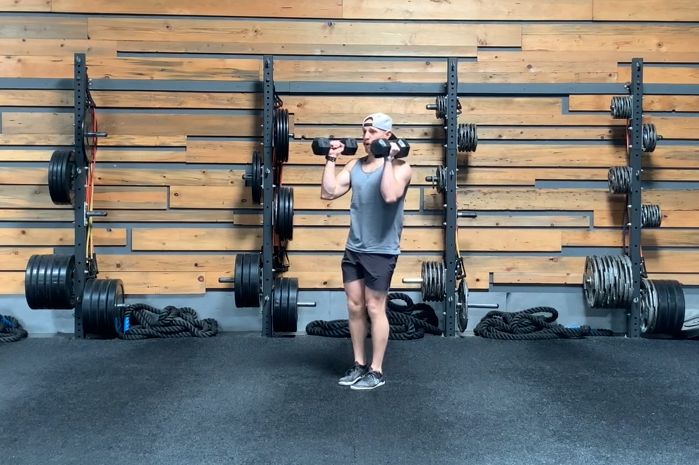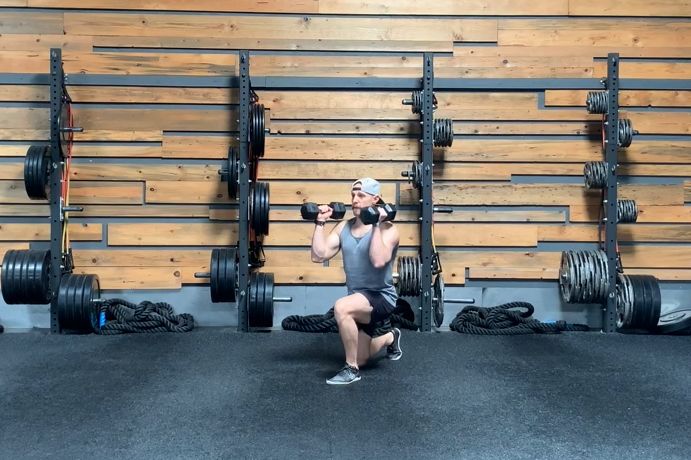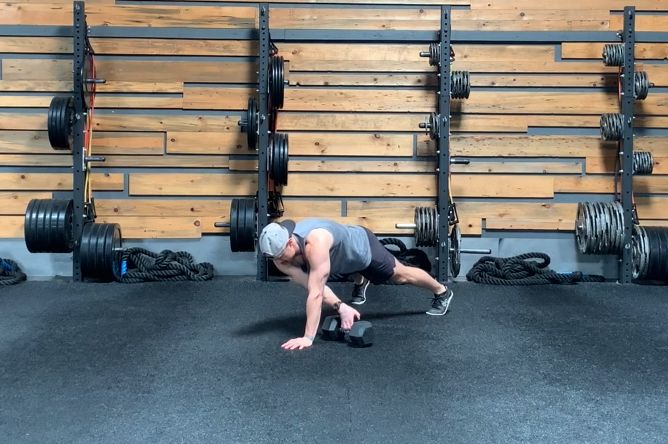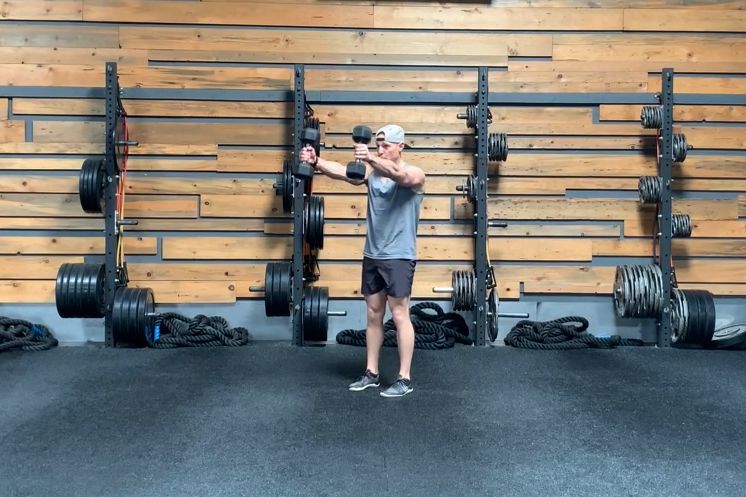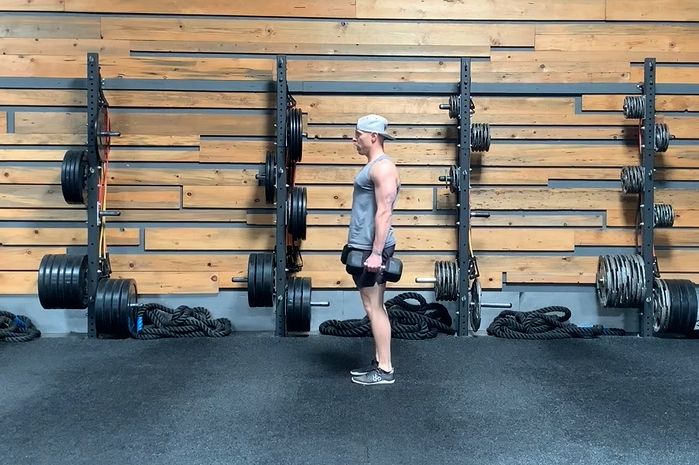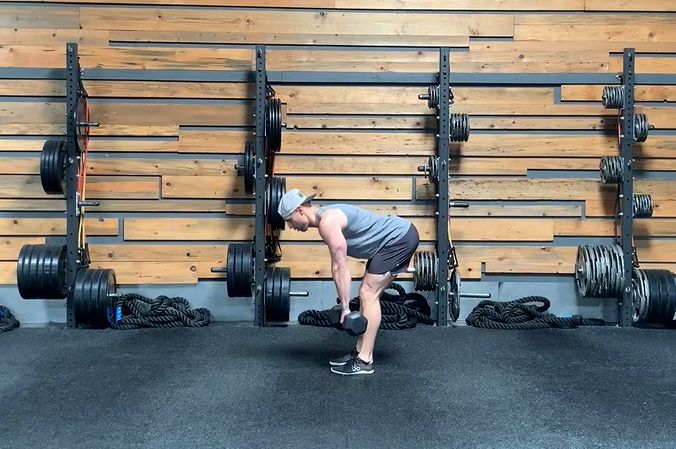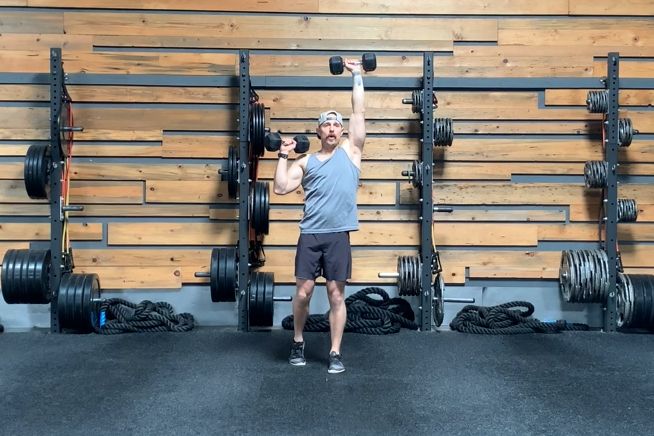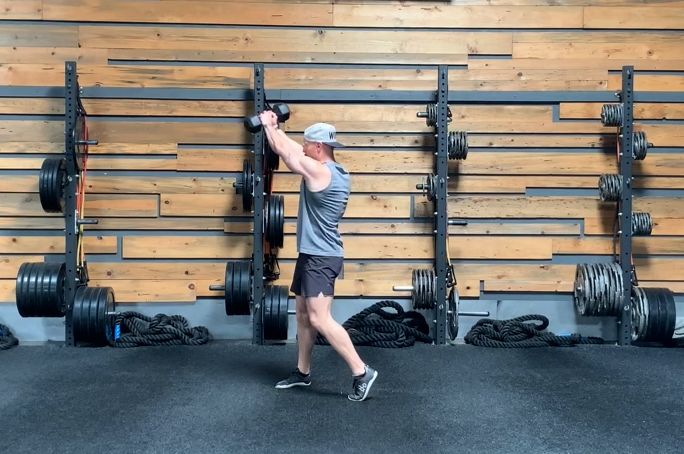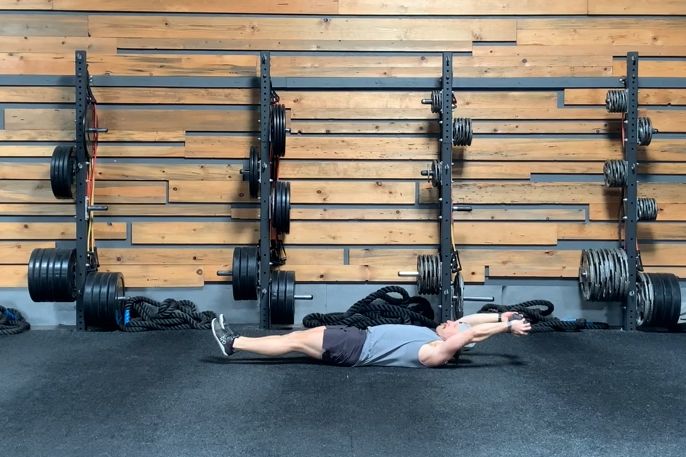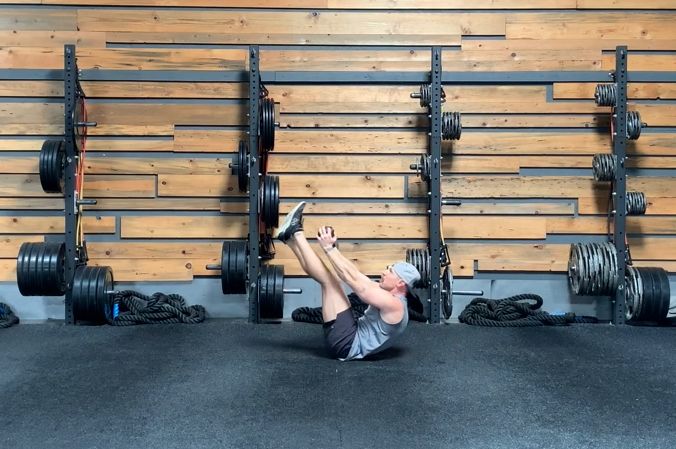10-Minute Mood-Boosting Workout for When You Need a Pick-Me-Up
New research suggests that resistance training may make you feel happier.
You know first-hand the effect of cycling on your psyche. Just one ride can boost your mood, and regularly getting in the saddle (or doing pretty much any form of aerobic activity) can help relieve stress and alleviate the symptoms of anxiety and depression. There’s plenty of research to back that up. Even just a 10-minute workout can boost your mood and make you happier.
It’s not just cardio that can improve mental health.
More good news: A recent study published in Trends in Molecular Medicine indicates that it’s not just cardio that can improve mental health.
“Overall, it looks like resistance training has roughly the same benefit for reducing depressive symptoms as aerobic exercise and roughly twice as much benefit for anxiety,” Jacob D. Meyer, Ph.D., director of the Wellbeing and Exercise Laboratory at Iowa State University and one of the authors of the review article, tells Bicycling. He notes that much of the available research has been conducted with generally healthy individuals (“more work is needed with populations with high levels of depression and anxiety,” he says), but the initial findings are promising.
Here, Meyer explains exactly how strength training can boost your mood. Plus, we have the best mood-boosting workout to do when you need a pick-me-up.
How a Strength Workout Makes You Feel Happier
There are still a number of theories about why exercise (both aerobic and strength training) makes us so happy, and it may be that aerobic activity improves our mood for different reasons than strength training.
Meyer and his co-author, Matthew P. Herring, Ph.D., associate professor at the University of Limerick considered potential biological, behavioural, and neurological factors when doing their research. “The mechanism that may be the most promising [is] cerebrovascular adaptation, or changes in brain blood flow patterns, that occurs as a result of resistance training,” Meyer says.
It appears that cranking out reps grouped in sets provides a “semi-patterned series of physiological demands” that, over time, may improve blood flow to the brain. This kind of adaptation is meaningful, as abnormalities in brain blood flow patterns are found in individuals with depression.
Meyer is currently heading up a 200-person trial to investigate the effects of resistance training on adults with depression and anxiety in the hopes that this and other research will give healthcare providers and movement professionals more detailed information about how to best program strength-training workouts for mental health benefits.
In the meantime, Meyer suggests sticking with the physical activity guidelines recommended by the American College of Sports Medicine (ACSM) and doing workouts that hit most of the major muscle groups with two to three sets of eight to 12 reps.
Also, keep it simple. “From a practical perspective, whatever the participant will do again is what we want to focus on—don’t make it too complicated,” Meyers says. “We know that continued participation is key.”
The 10-Minute Mood-Boosting Workout
For a full-body strength workout that will help to fortify both your mental and physical health, Dane Miklaus, C.S.C.S., founder of WORK Training Studio designed this workout for cyclists.
The following two-circuit routine purposely follows a pattern: lower body exercise, upper body exercise, and core/cardio exercises. “I’ve always loved routines like this as they promote global strengthening while also creating a direct and indirect (from central nervous system activation) cardiovascular benefit,” Miklaus says. In other words, this routine will not only get you strong, but also increase your breathing rate and get your blood pumping.
How to use this list: For those newer to strength training, Miklaus recommends completing 2 sets of 12 to 15 reps using a moderate weight (for one-sided exercises, one rep equals both sides). Those who regularly strength train can bump up their weight and do to 4 sets of 6 to 10 reps, depending on the time you have. Complete the first circuit before moving on to the second circuit. Rest 1 to 2 minutes between.
Miklaus demonstrates each move below. You will need a set of dumbbells and an exercise mat.
Circuit 1
1. Front Rack Reverse Lunge
Why it works: “The upright position creates a core-stimulating effect greater than a traditional lunge,” Miklaus says. “And, of course, like other lunges, it strengthens all the muscles of the legs necessary for cycling.”
How to do it:
- Stand with legs shoulder-width apart. Hold weights in a front rack position (weights over shoulders, elbows bent, palms facing in).
- Step back with right foot and lower into lunge. Right knee should almost touch ground, and left thigh should be parallel to ground. Keep back straight and left knee over toes.
- Push through left foot to return to standing position.
- Complete all reps, then switch sides.
2. Bent-Over Row
Why it works: “The bent-over row recruits all the muscles of the posterior kinetic chain to get into and hold the position,” Miklaus says. “The rowing movement targets the muscles of the arms and mid and upper back.”
How to do it:
- Stand with feet hip-width apart, holding dumbbells down in front of you, palms facing each other.
- With slightly bent knees, hinge at hips by sending hips straight back. Keep back flat and neck neutral. This is the starting position.
- Pull the weights up toward ribs, squeezing shoulder blades together.
- Slowly lower weights until elbows are fully extended.
- Repeat.
3. Plank Pull-Through
Why it works: “This is a sneaky tough core movement that focuses on anti-rotation at the hips,” Miklaus says. “The goal is to pull the dumbbell laterally (so actually drag it, don’t just pick it up) from side to side without allowing your hips to twist or lean too far to one side.”
How to do it:
- Start in high plank position, shoulders over wrists, and feet wider than hip-width apart. Place a dumbbell horizontally behind and just outside of right wrist.
- Reach underneath torso with left hand, grabbing dumbbell. Drag weight so it’s positioned behind and just outside of left wrist. Return to plank.
- Repeat dragging motion with right hand and return to plank.
- Continue alternating.
4. Double Dumbbell Swing
Why it works: “This movement is great for power development, especially for athletes who predominantly focus on endurance work. It strengthens the posterior chain, but the rate of speed required to perform the movement well recruits primarily type II muscle fibres, which are power fibres,” Miklaus says.
How to do it:
- Stand with feet a little narrower than hip-width apart. With arms at sides, hold a dumbbell in each hand, palms facing in.
- With a flat back and neutral neck, push hips back and bend knees slightly to hinge at hips. Keeping arms straight, simultaneously draw weights back behind hips.
- Drive feet into ground and forcefully extend hips to stand up, using momentum to swing both weights up to shoulder height.
- Allow weights to swing back down as you hinge at hips again and immediately go into next rep.
- Repeat.
Circuit 2:
5. Stiff-Leg Deadlift
Why it works: “Most cyclists have a propensity to have very strong quads as a result of their preferred modality,” Miklaus says. “As such, I like to balance out the leg musculature by adding in exercises like stiff-leg deadlift that target the hamstrings and glutes more directly.”
How to do it:
- Stand with feet hip-width apart, holding dumbbells at sides with straight arms and an overhand grip (palms facing you).
- Keeping legs as straight as possible (a slight bend in knees is okay), hinge at hips, push hips back, and lower weights in front of legs until there is a a pull in hamstrings. Maintain a flat back and don’t round shoulders.
- Engage glutes and drive feet into floor to extend hips and stand back up.
- Repeat.
6. Reciprocating Shoulder Press
Why it works: “This is a fantastic pushing exercise that recruits the deltoids, pecs, and triceps. The reciprocating fashion forces concurrent core activation amongst the muscles of the obliques and transverse abdominis,” Miklaus says.
How to do it:
- Stand with feet shoulder-width apart and dumbbells in a front rack position (weights over shoulders, elbows bent, palms facing in).
- Press right dumbbell overhead, rotating shoulder so that palm faces outward at top of lift.
- While lowering right dumbbell back to shoulder, simultaneously press left dumbbell overheard, rotating palm forward.
- Repeat, alternately pressing one dumbbell overhead while simultaneously lowering the opposite dumbbell.
7. Woodchop
Why it works: “The woodchop is another great power move that targets the core, lower back, and posterolateral [side and back] glute muscles. These are all uber important in sports like running and cycling, but can sometimes be neglected,” Miklaus says.
How to do it:
- Stand with feet hip-width apart, knees slightly bent, and hold a dumbbell with both hands below left hip.
- Keep arms straight as you swing dumbbell across body to above right shoulder, straightening legs and pivoting on ball of left foot.
- Swing dumbbell back to left hip, bending knees slightly.
- Repeat to complete all reps, then switch sides.
8. Weighted Jackknife
Why it works: “Adding weight to the jackknife increases the force required of the abs to initiate the movement. Once momentum begins, however, the dumbbell actually aids in pulling you up to the top,” Miklaus says. “For people who have difficulty reaching as high on a regular jackknife, the weighted version may actually provide some assistance to increase their range of motion.”
How to do it:
- Lie faceup with legs straight up in the air and hold a dumbbell (vertically) with both hands, arms straight above chest.
- Extend arms and legs away from each other, creating a hollow-body position with arms and legs hovering a few inches off the ground.
- Draw hands and feet together to meet in a V position, sitting up onto tailbone.
- Repeat.
READ MORE ON: dumbbell workout mood-boosting workout



